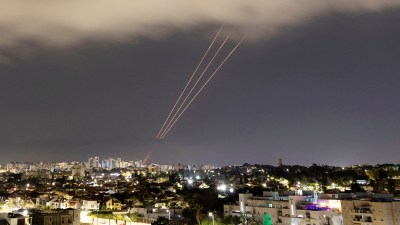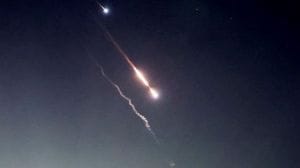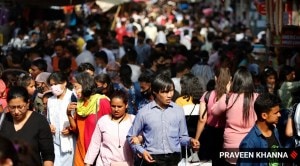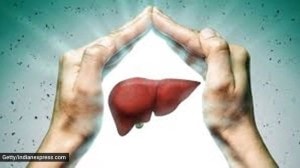- India
- International
Citizenship Bill: the concerns behind Mizoram’s strong protests
In Mizoram, the concern is not about Hindu immigrants from Bangladesh but about Chakmas, a tribal and largely Buddhist group.
 Mizoram protests: Schoolchildren join a protest against the Citizenship (Amendment) Bill. (Lafava Photography)
Mizoram protests: Schoolchildren join a protest against the Citizenship (Amendment) Bill. (Lafava Photography)
Among various Northeastern states where protests have broken out over the Citizenship (Amendment) Bill, Mizoram witnessed massive demonstrations last week. These came into focus particularly because of photos, widely circulated on social media, that showed protesters with posters that proclaimed “Hello China, bye bye India”. This protest was organised by the influential Mizo Zirlai Pawl (MZP). The slogan was intended to convey that “we are not safe in India”, said Lalhmachhuana, general secretary of the central committee of the Young Mizo Association (YMA). “The Government of India did not listen to our repeated requests,” he said.
A look at why Mizos are concerned about the Bill:
What the Bill says
The Bill amends the Citizenship Act, 1955, relaxing the citizenship eligibility rules for immigrants belonging to six minority (non-Muslim) religions from Afghanistan, Bangladesh or Pakistan. Read with various other provisions, the cutoff for eligibility becomes December 2014. Political parties and non-political groups in the Northeast have protested on grounds of its potential impact on the region’s demography, and questioned its constitutionality as it grants citizenship on the basis of religion.
For protesters in Assam, Meghalaya and Tripura, the concern is about Hindu immigrants from Bangladesh. The Assam Accord, protesters in that state point out, lays down 1971 as the cutoff for acceptance as citizens; the National Register of Citizens is being updated based on this cutoff, which does not differentiate on the basis of religion.
Mizoram is different
In Mizoram, the concern is not about Hindu immigrants from Bangladesh but about Chakmas, a tribal and largely Buddhist group. The Chakmas are present in parts of the Northeast, and the Chittagong Hill Tracts of Bangladesh, with which Mizoram shares an international border. While Christians form 87% of Mizoram’s 11 lakh population (2011), Chakmas number about 1 lakh. Certain sections in Mizoram blame Chakmas for illegal migration from Bangladesh, which the community denies. The state has seen ethnic violence, with instances of arson, names of Chakmas being struck off voters’ lists, and denial of admission to Chakma students in college.

Scholar Joy Pachuau writes in her book Being Mizo: “They [Chakmas] are clearly identified as ‘non-Mizo’ by the Mizos, and ‘there is no attempt at incorporating them as Mizo’, I was told. In fact, the YMA often made calls to expel them from Mizoram as they were considered illegal immigrants, large-scale migrations having taken place in 1964 (caused by inundation of their land due to the damming of the Karnaphuli river for a hydro-electric project in Bangladesh) and 1980-4 (caused by insurgency in the Chittagong Hill Tracts led by the Hills Peoples’ Movement of Bangladesh). Nor did the Chakmas want to identify themselves as Mizo.”
Data vs data
The apex students’ body Mizo Zirlai Pawl (MZP) and the YMA, which are leading the current agitation, have often cited figures they attribute to the Census. “In 1901, there were only 198 Chakmas in Mizoram and by 1991 it was over 80,000. The growth rate is far more than normally possible. It proves that there has been influx from Bangladesh,” said MZP leader Ricky Lalbiakmawia.
Chakma activists cite a 2015 report submitted by the government of Mizoram to the NHRC. “The veracity of the Census figures between 1901 and 1941 cannot be ascertained as the same are not available with the Census Directorate, Mizoram,” the then state Deputy Secretary (Home) wrote in the report. The report cites Census data that puts the Chakma population at 15,297 in 1951 and 96,972 in 2011.
“Why will Chakmas migrate to Mizoram when there is so much structural discrimination against us? In the 1960s, Chakmas had migrated from the Chittagong Hill Tracts, but all of those people were settled in Arunachal Pradesh,” said Paritosh Chakma, secretary general of the All India Chakma Social Forum. He cited a 2017 news report in Mizo daily Vanglaini, which quoted the then DGP as saying there had been no illegal migration of Chakmas from Bangladesh in the last five years.
The Bill and Chakmas
“We have nothing against Chakmas residing legally for decades in Mizoram, but we are against Chakmas who have illegally migrated from Bangladesh. If the Bill is passed, they will become legal Indian citizens and maybe in some time, Mizos will become a minority in our own land. Moreover, the Bill also violates the Constitution of India,” said Lalbiakmawia.
The state has a Chakma Autonomous District Council, set up in April 1972. It is part of an Assembly constituency that last elected B D Chakma, the lone BJP MLA in the state. “There are no illegal Chakma people living in Mizoram and if they start migrating after the Bill is passed, I will resign as an MLA,” he said.
More Explained
EXPRESS OPINION
Apr 19: Latest News
- 01
- 02
- 03
- 04
- 05








































